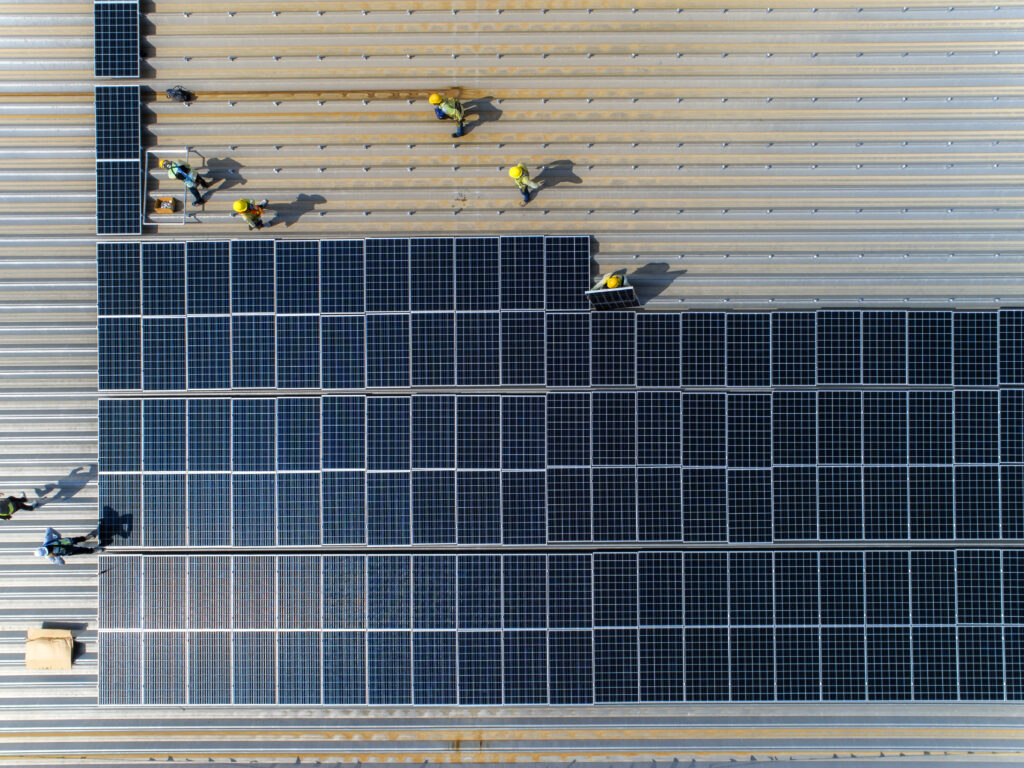Rooftop solar for MSMEs in India
- By user

The Indian economy is on a transformative journey towards sustainability. Considering the net-zero goal for 2070, renewable energy, particularly rooftop solar, will play a pivotal role. Here we explore the immense potential of rooftop solar for Micro, Small and Medium Enterprises (MSMEs) in India. We’ll delve into how MSMEs can leverage this clean energy source to decarbonize their operations, achieve cost savings, and propel themselves towards a greener future.
Decarbonisation and net-zero target
India stands at a pivotal moment in its pursuit of sustainable development and economic progress. With a goal to decarbonize its economy and achieve net-zero emissions by 2070, the country is capitalizing on its vast potential for renewable energy. Rooftop solar energy, in particular, presents a significant opportunity for India’s MSMEs to contribute to these goals while reaping substantial benefits. Further we explore the role of rooftop solar in the decarbonization of MSMEs and the myriad benefits it offers.
India’s Aim to Decarbonize and Reach Net-Zero
India has committed to becoming net-zero by 2070, which means balancing the amount of greenhouse gases emitted with the amount removed from the atmosphere. This target is part of India’s strategy to combat climate change and promote sustainable development.
Renewable energy, particularly solar power, is central to India’s decarbonization strategy. With over 300 sunny days annually, India has immense potential for solar energy generation. The government aims to install 500 GW of non-fossil fuel energy capacity by 2030, with a significant portion coming from solar power. Rooftop solar installations are a key component of this plan, offering decentralized energy solutions that can reduce the carbon footprint of industries and households alike.
India’s Commitment to the Paris Agreement
India’s pledge to the Paris Agreement underscores its commitment to global efforts to mitigate climate change. Under this agreement, India has set Nationally Determined Contributions (NDCs) that include reducing the emissions intensity of its GDP by 45% by 2030 from 2005 levels and achieving half of its energy requirement through renewable energy technologies by 2030.
Rooftop solar installations are instrumental in achieving these targets. By promoting clean energy at the consumer level, India can significantly cut down on its reliance on fossil fuels, thereby reducing greenhouse gas emissions. For MSMEs, adopting rooftop solar is not only an environmental imperative but also a step towards compliance with national and international regulations aimed at fostering sustainable development.
GDP Growth and the Contribution of MSMEs
MSMEs are the backbone of the Indian economy, contributing approximately 30% to the country’s GDP and accounting for about 45% of the manufacturing output and 40% of exports. The sector employs over 150 million people, making it a critical driver of economic growth and social development.
However, MSMEs also face significant challenges, including high energy costs, which can impede their competitiveness and growth. Transitioning to rooftop solar can help mitigate these challenges by providing a reliable and cost-effective energy source, enhancing the sector’s productivity and sustainability.
Electricity Charges for MSMEs in India
Electricity costs constitute a substantial portion of operating expenses for MSMEs in India. The high and continually increasing electricity tariffs can strain the financial resources of these enterprises.
Figure 1 – Energy charges for Low tension (LT) and High tension (HT) Industrial consumers in top 5 rooftop solar states

On average, industrial electricity tariffs in India range from ₹5 to ₹10 per kWh, depending on the state and the consumption level. These costs can be particularly burdensome for energy-intensive industries, reducing their profitability and growth potential.
Generation Cost of Rooftop Solar
The generation cost of electricity from rooftop solar systems has been decreasing steadily due to advancements in technology, economies of scale, and supportive government policies. Currently, the cost of generating electricity from rooftop solar in India is around ₹3.50 to ₹5.50 per kWh, making it competitive with, and often cheaper than, grid electricity.
This cost advantage is a significant incentive for MSMEs to invest in rooftop solar. By reducing their energy costs, MSMEs can improve their margins and invest more in innovation and expansion, contributing to overall economic growth.
Conclusion
India’s drive to decarbonize and achieve net-zero emissions presents a unique opportunity for MSMEs to contribute to national goals while benefiting from the transition. Rooftop solar is a low-hanging fruit in this context, offering significant advantages in terms of cost savings, energy independence, and compliance with environmental regulations.
The decreasing generation cost of rooftop solar makes it a financially viable option for MSMEs, allowing them to reduce operational costs and increase profitability. Additionally, by adopting clean energy, MSMEs can enhance their competitiveness, align with global sustainability standards like the Carbon Border Adjustment Mechanism (CBAM), and support India’s commitments under the Paris Agreement.
In summary, the adoption of rooftop solar by MSMEs is a strategic move that aligns economic and environmental goals. It not only supports India’s ambitious decarbonization targets but also empowers MSMEs to thrive in a competitive global market. As India continues to prioritize renewable energy, MSMEs that embrace rooftop solar will be well-positioned to lead the way towards a sustainable and prosperous future.

Dr Ramesh Chandra Samantaray
January 3, 2025 at 5:03 pmI want roof top solar power generation system. May I know whom to contact or any company who can install this system?
Dr Ramesh Chandra Samantaray
January 3, 2025 at 5:04 pmGreat Idea but I want the contact details of installing agencies.
Dr Ramesh Chandra Samantaray
January 3, 2025 at 5:04 pmGreat Idea